WINSLOW — Though overcast skies threatened to bring rain on Saturday, the weather didn’t dampen spirits at the annual Fort Halifax Days celebration in Fort Halifax Park on the Kennebec River.
The fourth annual celebration, which features various historical re-enactments from the mid 1700s when the fort was built, brought dozens to the park to listen to music, see various performances and watch cannons and muskets get fired. Though there seemed to be fewer staged re-enactments compared to last year, there were still demonstrations for spectators to learn about life in a colonial fort.
Mike Dekker and Mark Rohman, who are part of a “mobile museum tour” group known as Maine’s French and Indian Wars, were demonstrating the kinds of food rations soldiers at the fort would have: a third of a pint of dried peas, three-fourths of a pound of salted pork, a pound of ship’s bread, and four ounces of rum.
“It’s pretty indicative of what they’d be eating,” Rohman said.
Dekker said there would be other weekly provisions, such as butter and candles, but for the most part a soldier’s diet at the fort consisted of what was before them. He said soldiers who went out on patrol wouldn’t get the peas, but would get higher wages. Most people in the fort were not on patrol, he said, and instead were more likely clearing trees with axes.
Fort Halifax was built in 1754 at the start of the French and Indian War to protect the upper Kennebec River valley from potential attacks. After the war ended, the fort fell into disrepair, leaving only the blockhouse, which was nearly lost in the Great Flood of 1987. The logs were recovered later and the fort was rebuilt in 1988.
Dekker said Fort Halifax itself never really came under attack, but was commissioned by England to force out French troops from the area. Dekker said General John Winslow, the town’s namesake, lead an army of 800 people up the Kennebec River on those orders, at the same time George Washington was doing the same in Virgina.
“It was part of an imperial design,” he said.
Dekker said while the fort itself wasn’t overly active, it served a “vital, strategic” importance of isolating native tribes in the area during times of conflict.
“This is a big deal,” he said.
Dekker has authored a book called “French & Indian Wars in Maine,” which is about the history of struggle among the British, French and Native Americans in early American history. Part of the display was a laminated poster reproduction of a declaration of war from the governor of Massachusetts at the time against Native Americans in the region.
Fort Halifax Days started as a means to raise money for renovation of the park. In 2014, the town won a $95,000 grant for the project and has completed much of the work so far. Some renovation occurred last fall, including upgrades to the parking lot, making walkways from the parking lot to the picnic huts wheelchair-accessible and installing a memorial stone and pavers at the front of the park.
Town Council Chairman Steve Russell, who said he usually goes to the celebrations when he can, said Fort Halifax Days gets a little better each year. He said the fort was a cross roads, a place where travelers would converge when traveling by water. He said the celebration was a good thing for the community.
“Just a sense of where we came from,” he said of the importance of the event.
In addition to historical re-enactments, music and cannon fire, spectators also had the opportunity to see the remaining part of the fort, as well as participate in demonstrations. A line of 20 or so children were enlisting in the cause near the standing fort.
Colin Ellis — 861-9253
cellis@centralmaine.com
Twitter: @colinoellis
Send questions/comments to the editors.


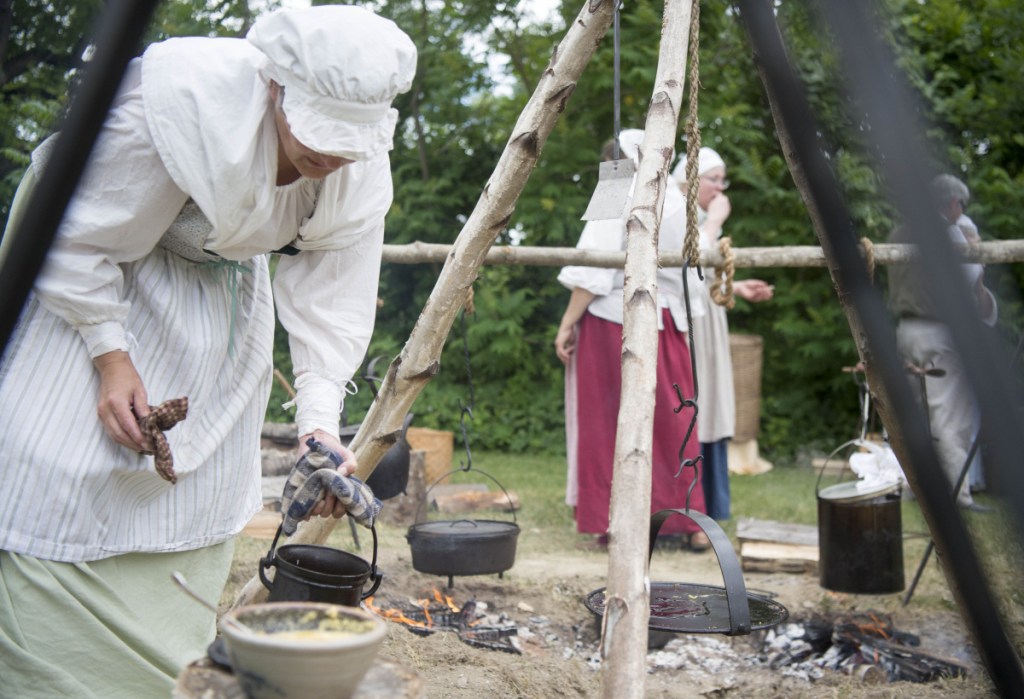
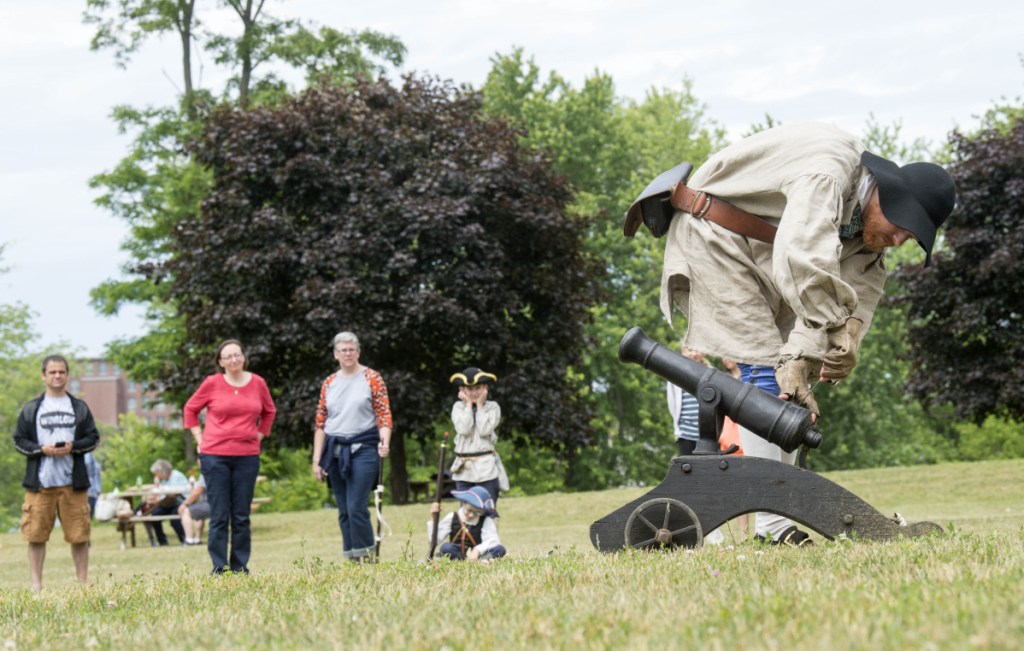
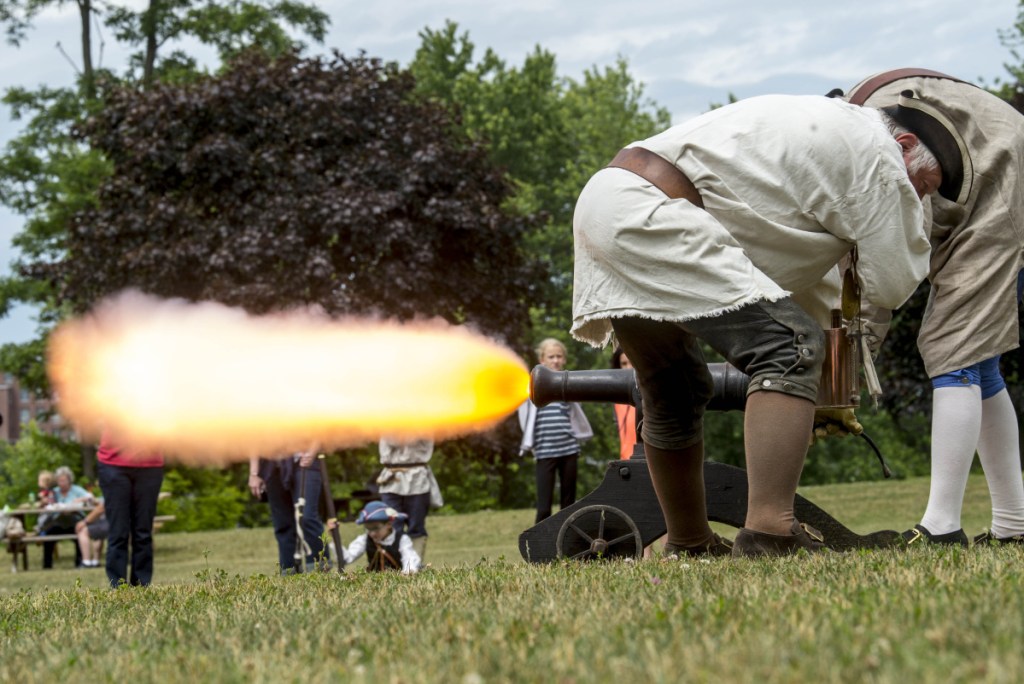
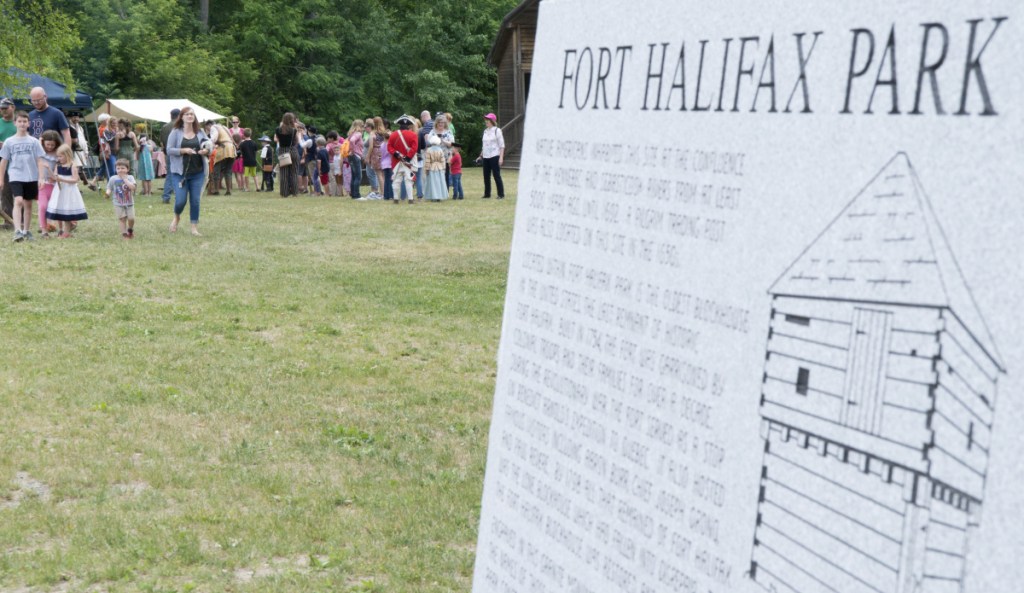
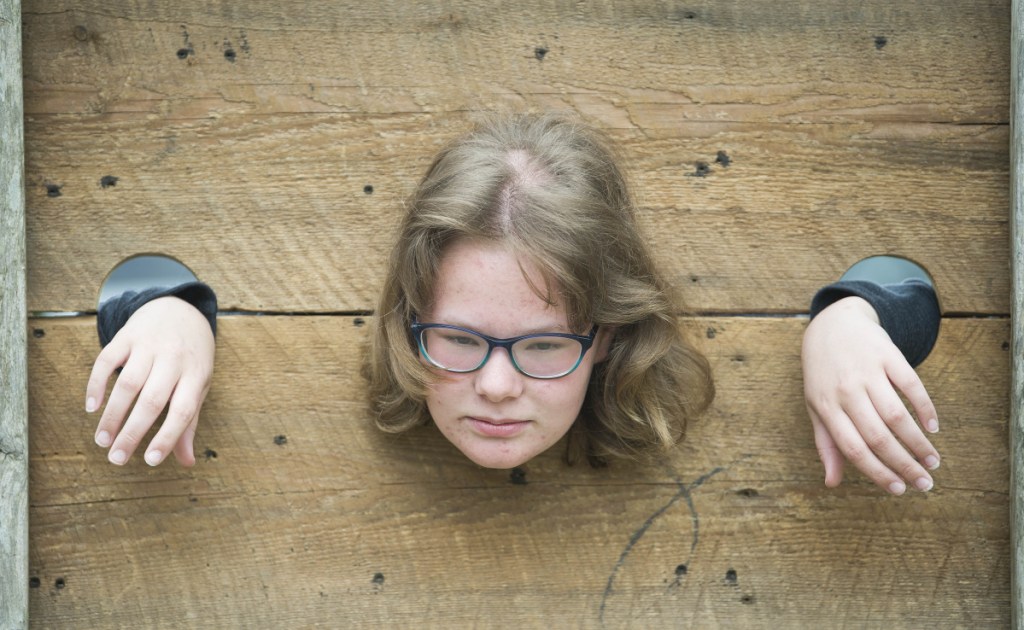
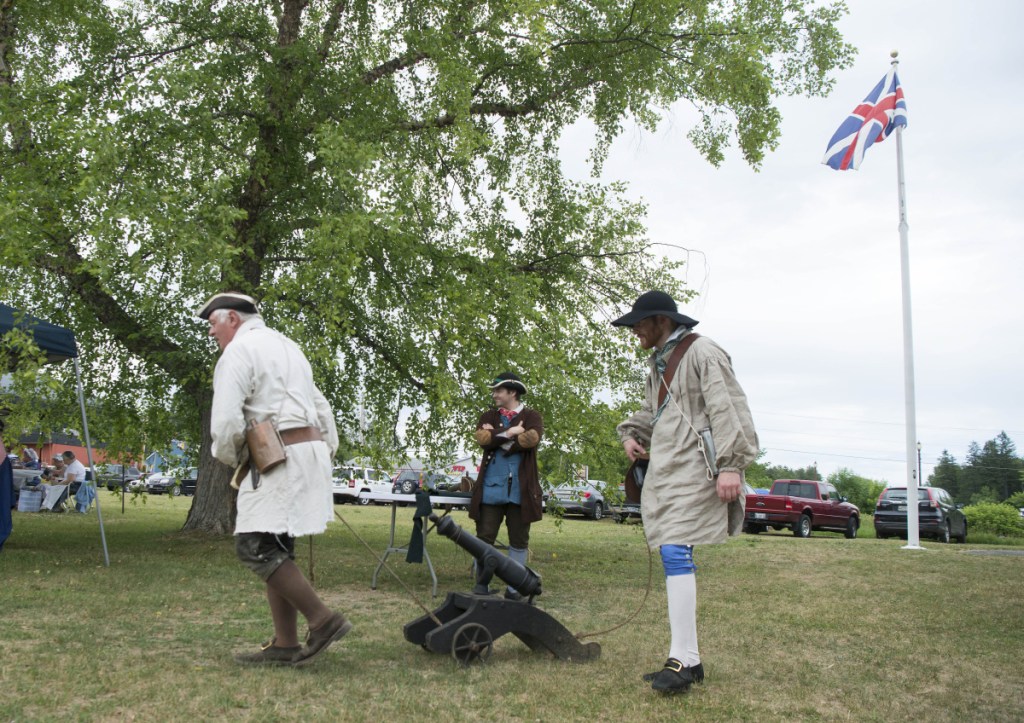
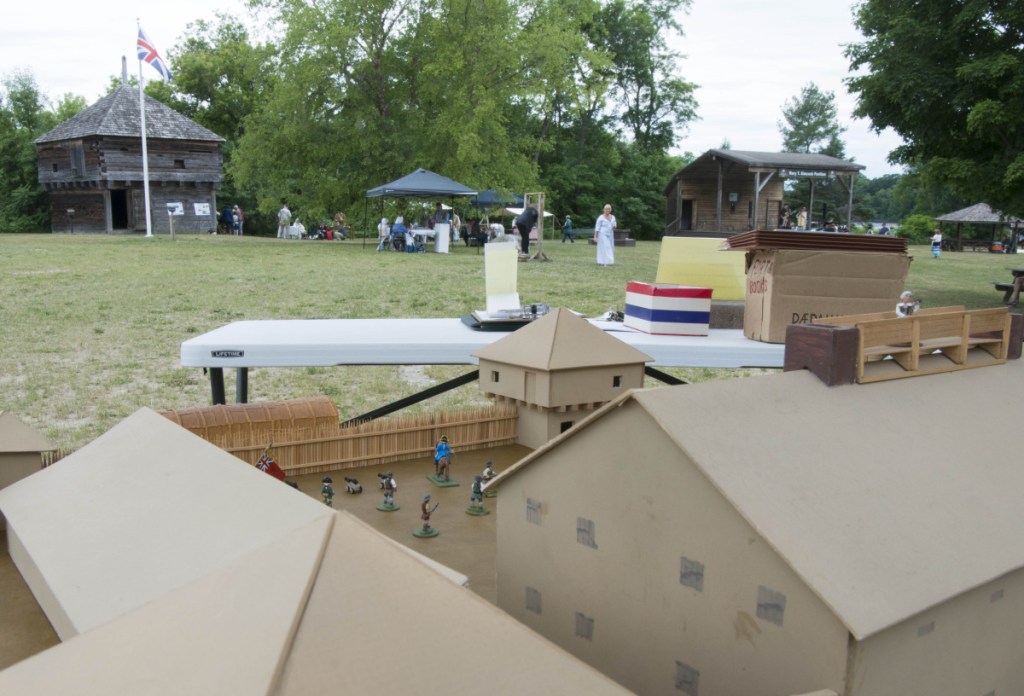
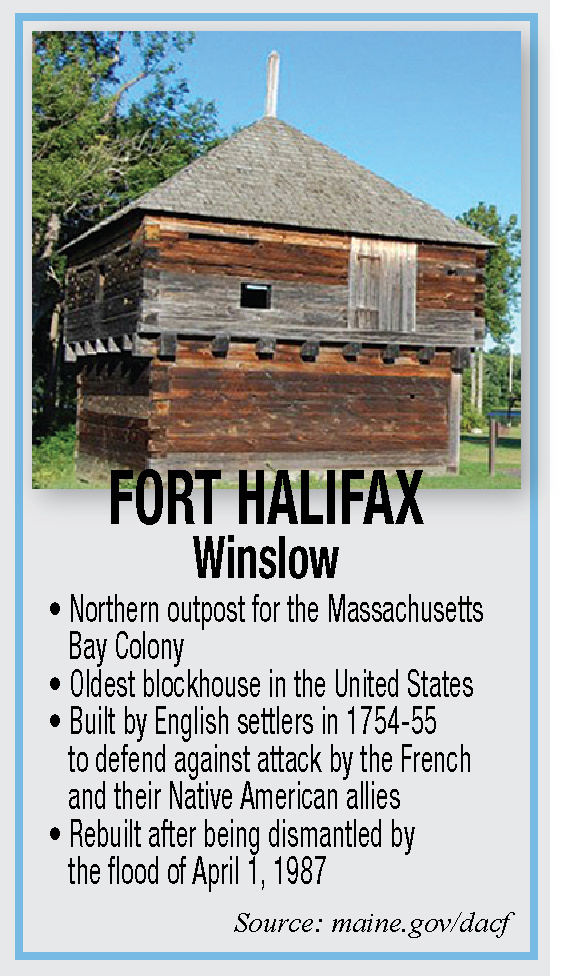

Success. Please wait for the page to reload. If the page does not reload within 5 seconds, please refresh the page.
Enter your email and password to access comments.
Hi, to comment on stories you must . This profile is in addition to your subscription and website login.
Already have a commenting profile? .
Invalid username/password.
Please check your email to confirm and complete your registration.
Only subscribers are eligible to post comments. Please subscribe or login first for digital access. Here’s why.
Use the form below to reset your password. When you've submitted your account email, we will send an email with a reset code.